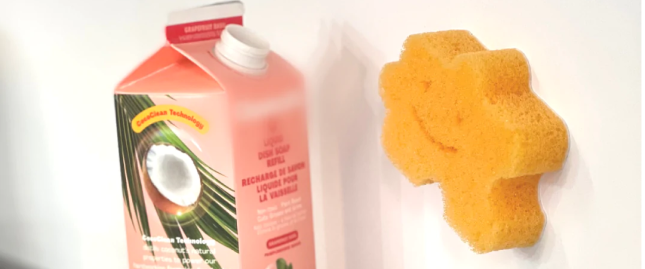MOUNTAINEERING CLOTHING BECOMES EVERYDAY FASHION

Korea is a mountainous country with mountains taking up 70 to 80 percent of the land mass.
Though downtown areas may barely hint at the presence of mountains amid the skyscrapers and traffic, there are some visual reminders that Korea is a nation of mountains: middle-aged people dressed in mountaineering clothing without a hiking plan on their mind.
The “athleisure look” of wearing clothes for athletic activities in everyday life has settled itself as more than a passing trend in the fashion scene here. Usually, the term is associated with images of young people in track tops and jogger pants.
But middle-aged Korean men and women are a part of the scene, too, as they show their love for mountaineering outfits in the hearts of cities. Many wear brightly tinted hiking outfits in daily life.
Walking across the eight lanes of Gwanghwamun in downtown Seoul on a weekday afternoon, middle-aged men dressed in outdoor wear strut down the streets. Though they may not seem to be dressed for work, they work at offices in the area - and it is not a special costume day.
Lee Byoung-sik, in his 50s, works for a trading company in Gwanghwamun. His company is lenient on its dress code. A mountain lover, Lee often picks out hiking clothes for his work attire.
“I just grab what is comfortable to me and also outdoor wear takes up a large part of my wardrobe,” Lee said. “I would go for the suit and tie look if there was an important meeting. But if not, why can’t I be dressed in comfortable clothes that I like?”
Lee’s love for outdoor wear continues on the weekends, when he takes a walk at the park with his wife, reads a book at a café, or meets friends to grab a drink.
“But I was once greatly embarrassed when my family took me to a fancy hotel restaurant. They told me to get changed, but I ignored them. However, once I sat down and looked around, I realized that I stood out too much,” he said. “That was when I realized that for some occasions, I should pay more attention to what I wear.”
Though Lee may be a hiking enthusiast, the love for hiking clothes is not limited to people like Lee. Those who do not share the hobby of hiking also appreciate the beauty of outdoor wear -- event outside the confines of South Korea.
When traveling in Europe through package tours, many wear hiking clothes of bright, vivid hues of neon green, electric blue, and hot pink. A joke has spread: When you are lost in Europe, look for people dressed in hiking clothes, they are likely to be Korean.
“They are colorful, lightening your face when taking photos,” said Lee Hyang-suk, a housewife in her early 50s. When visiting Italy, a year ago, she was dressed in a canary yellow climbing jacket and other hiking garments. Though she is no hiking enthusiast, she bought the items before embarking on the trip.
“You have to walk for long hours when traveling in Europe. Mountaineering clothes are designed for long hours of activity, and they are also great for absorbing sweat,” she said.
The trend made headlines here in 2016, sparked by a travel agency that sent a text message to its customers that read, “Europe is a place to visit beautiful cities, not a place to go hiking. Please do not wear hiking clothing.”
After the news surfaced, a heated online debate broke out. Some argued it is inappropriate to wear mountaineering clothes to cathedrals and museums, and that it can make others uncomfortable. Others said it is one’s right to wear whatever one desires.
As the controversy deepened, the travel agency clarified, “The intent was not to fully ban hiking wear but to advise people to be careful, as there are negative views on Korean travelers. (The outfit) makes travelers vulnerable to pickpockets.”

Lee is aware of such worries, but when going on another trip to Europe next year, she is likely to be dressed in hiking clothes again.
“Whenever I try to tell my daughter she is not dressed the right way, she snaps back at me, ‘It’s trendy to wear whatever I want.’ It is the same for me. I am going to wear what I want to,” she said.
Source: The Korean Herald (October 18, 2018)
More Korean Innovation News

The Rise of Womance: Women Spearhead Korean Entertainment

A Korean Marriage Story

Jwipo, Your New Jerky Obsession

To Binge or not to Binge?

The K-pop Comeback: Returning from Military Service

Longcations: Escaping to Vietnam

Kkondaes at Work: GenZ and Millennials Battle at the Office

The American Bansang Experience


